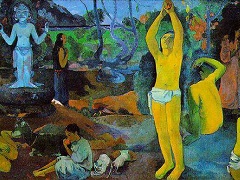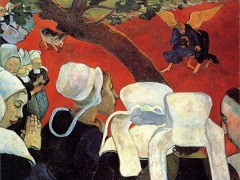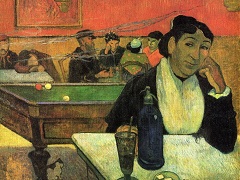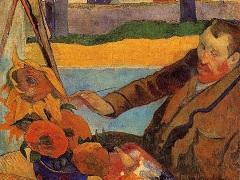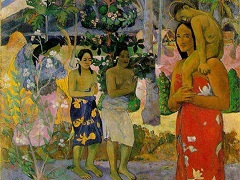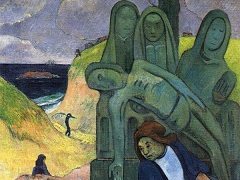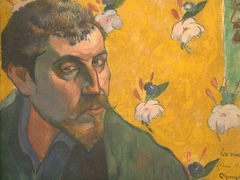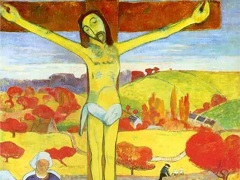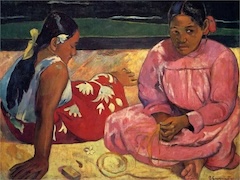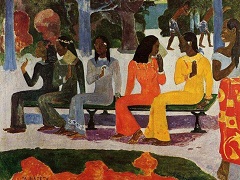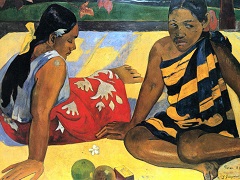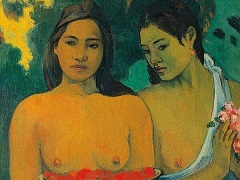Still Life with Three Puppies, 1888 by Paul Gauguin
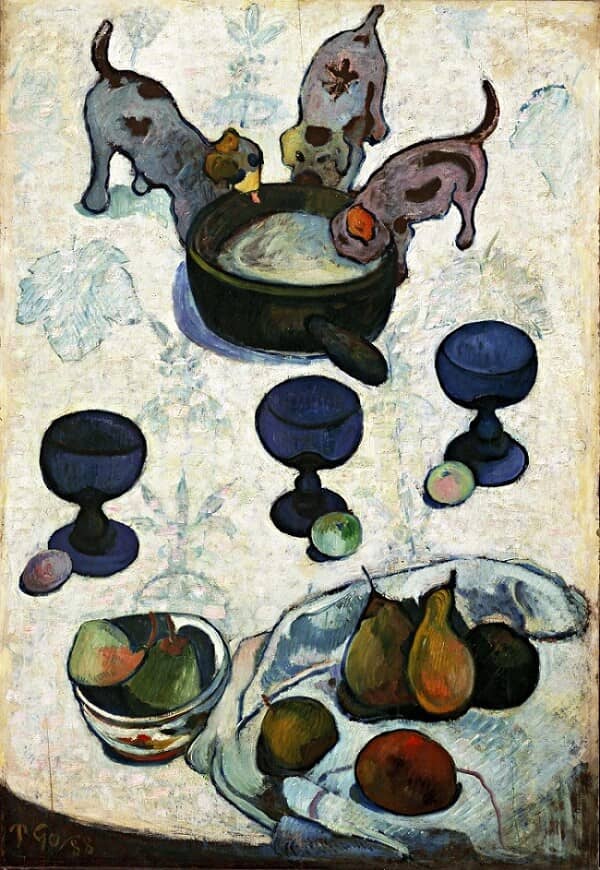
This painting features three distinct zones: a still life of fruit in the foreground, a row of three blue goblets and apples diagonally bisecting the canvas, and three puppies drinking from a large pan. The incongruous scale and placement of these objects on a dramatically upturned tabletop results in a disorienting composition.
When Gauguin painted Still Life with Three Puppies, he was living in Brittany among a group of experimental painters. He abandoned naturalistic depictions and colors, declaring that "art is an abstraction" to be derived "from nature while dreaming before it." The puppies bodies, for example, are outlined in bold blue, and the patterning of their coats mirrors the botanic print of the tablecloth. It is thought that Gauguin drew stylistic inspiration for this painting from children's book illustrations and from Japanese prints, which were introduced to him by his friend and fellow artist Vincent van Gogh that same year.

